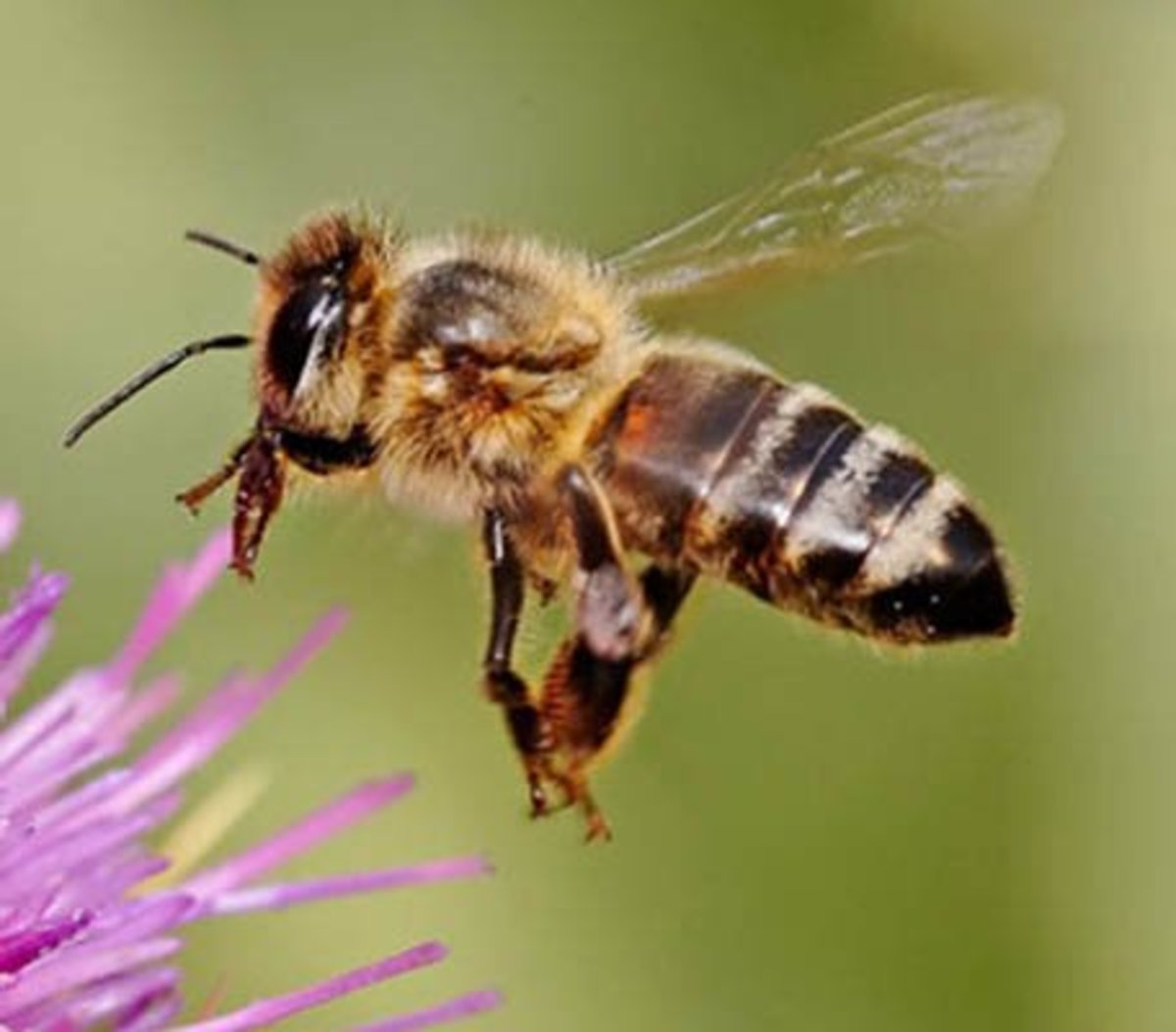Using a Honey Extractor
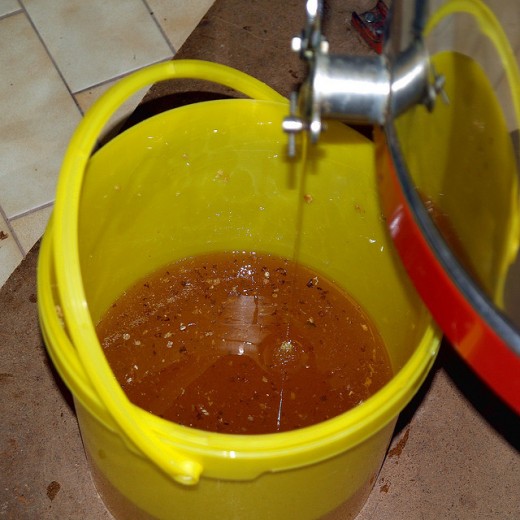
Extracting honey from the hive
Honey is one of nature's most delicious sweeteners and is packed full of good stuff for your body. Most people get their honey from the grocery store, but have you ever thought about where it comes from?
Everyone knows that honey comes from bee hives and that those little bugs do their best to keep you away from their golden treasure. They will even give their life to defend the hive by stinging anything that tries to rob the hive. The beekeeper has many tricks at their disposal to keep themselves safe while harvesting the honey.
It is an interesting process that the beekeeper goes through to get the honey out of their apiary and into your bottles.
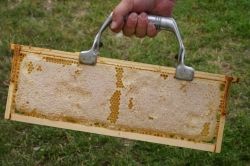
Harvesting honey from the frame
A hive of honey bees are very organized in how it is put together. If you were to look inside a beekeepers hive that is several boxes high, you would find two types of storage clusters. The bottom most boxes are called the brood chambers which is where the queen bee lays her eggs and the young bee larva is raised. In this area is a good bit of honey, but it is used to feed the young worker bees so they will grow up into foragers to bring more nectar and pollen into the hive.
On top of the brood nest is a divider that keeps the queen from entering the honey supers. These are the shorter boxes that are at the top of the hive. Only the workers are able to get into this section of the hive which in turn makes sure that no larva are ever raised here. Each frame will be filled completely with honey and are ripe for the harvesting.
The beekeeper knows when each frame is ready for harvesting when the bees cap the honey. Before they place the cap it is in the process of becoming honey. They perform all sorts of tasks to convert the nectar into the honey that we want to eat. When the entire frame is covered with capped honey, it is time to extract!
Extracting Honey on Amazon
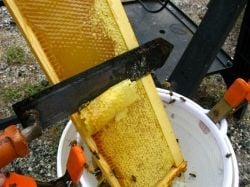
Uncapping Honey
Getting the honey exposed
Once the bees have completed the process of turning the nectar into honey, they add a cap of wax over the honey to finish the curing. If this capping is left over the honey, the extraction process can destroy the comb which takes a very long time for the bees to build back up.
To remove the caps, the beekeeper runs a fork over it with light pressure to break the caps. This can take quite a while and can make a bit of a mess. There are also hot knives that are used which are actually a good bit of fun. These knives are plugged into the wall and heat up. They are then run just under the caps to trim them off and leaves a very neat preserved cell for the bees to refill with honey.
Uncapping Honey on YouTube
Here is a beautiful example as to how easy it is to uncap a frame of honey. It really is just that easy.
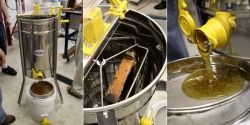
Honey Extractor
Getting the honey out of the comb
The device for removing honey from the frame of comb is very low tech. You insert the frame of comb into a barrel which is in turn spun quickly to fling the honey onto the sides of the barrel. The honey drains to the bottom of the barrel and is then collected after the extraction.
These extractors come in two flavors, manual and powered. It is not a very large chore to manually spin ten to twenty frames of honey but if you have many more you will be needing to go the powered route (or have kids that can be used as slave labor). Of course, if you belong to a local beekeepers guild, they will probably have a powered extractor that is used at extraction parties or can be loaned out for personal use.
Honey Extracting on YouTube
This is a very comical video of two ladies trying to extract honey. They have the process down, but it usually isn't this difficult!
How to start beekeeping - Great resources if you are interested in making your own honey
I'd love to hear from you about your honey extractions and how much you got. Leave a comment, and don't forget to like the page!




